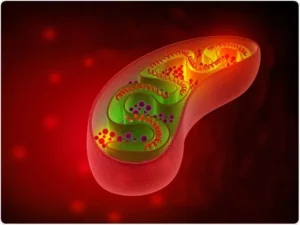GS3 – Science & Technology

Context:
Researchers in China have successfully developed rice varieties that naturally produce Coenzyme Q10 (CoQ10) through advanced genetic modification techniques, including CRISPR-Cas9.
This breakthrough positions biofortified crops as potential functional foods, aiming to combat nutritional deficiencies and enhance public health.
About Coenzymes
- Coenzymes are organic, non-protein compounds that assist enzymes during biochemical reactions.
- They often act as carriers, transferring electrons, atoms, or chemical groups between molecules.
- These molecules are essential for various biological processes such as energy generation, fat metabolism, DNA replication, and detoxification.
- They are mainly obtained from vitamins and essential nutrients present in our diet.
About Enzymes
- Enzymes are protein-based biological catalysts that accelerate chemical reactions in living organisms.
- They reduce the activation energy needed for reactions, thus facilitating crucial processes like digestion, cellular energy production, and genetic material replication.
- Examples include amylase, lipase, pepsin, and DNA polymerase.
What is Coenzyme Q10 (CoQ10)?
- Also known as Coenzyme Q or ubiquinone, CoQ10 is a fat-soluble antioxidant vital for maintaining cellular metabolism.
- It is naturally produced in the mitochondria — the powerhouse of cells — and plays a key role in energy production.
Sources of CoQ10 in Diet
- Animal-based: Organ meats like liver, heart, and kidneys are rich sources.
- Fish: Fatty fish varieties like salmon, sardines, and mackerel provide significant amounts.
- Plant-based: Whole grains such as wheat germ, oats, and corn also contribute.
- Vegetables: Spinach, broccoli, and cauliflower are notable vegetable sources.
Coenzyme Q9 (CoQ9)
- Similar to CoQ10, CoQ9 is predominantly found in plants.
- It is abundant in cereal grains like wheat, rice, oats, corn, and rye, along with certain flowering plants such as avocado, pepper, and cinnamon.




